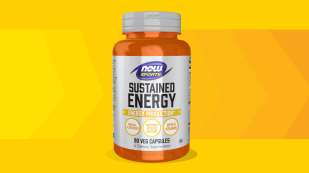Use coupon code CARDAMOM with your purchase of $40 or more for a free†
Cardamom OilMagnesium Stearate FAQs

What is stearic acid?
Stearic acid (also called Octadecanoic Acid) is one of the most common long-chain fatty acids, found in both natural animal and vegetable fats, known also by its structural description of being an 18-carbon chain fatty acid (18:0) with a chemical structure of C36H70MgO4. The Encyclopædia Britannica reports that, “In nature stearic acid occurs primarily as a mixed triglyceride, or fat, with other long-chain acids and as an ester of a fatty alcohol. It is much more abundant in animal fat than in vegetable fat; lard and tallow often contain up to 30 percent stearic acid.”1
Are stearic acid and stearates naturally found in foods?
Yes. Stearic acid (stearate) is a predominant saturated fat in the human diet. Stearates are nutrients that represent a natural part of every type of fat, whether animal or vegetable, and are typically consumed in amounts of several thousand milligrams per day from common food sources. A 200-calorie serving of dark chocolate can contain up to 5 grams (5,000 milligrams) of stearates; cocoa butter, coconut oil, beef fat, olive oil, fish, and virtually all fats and oils naturally contain far more stearates than do dietary supplements.
What is magnesium stearate?
Magnesium stearate is a combination of stearic acid and the essential mineral magnesium. It’s a mixture of pure stearic acid and palmitic acid, where the content of stearic acid is not less than 40.0% and the sum of the two acids is not less than 90.0%. The British Pharmacopoeia 1993 describes magnesium stearate as consisting mainly of magnesium stearate with variable proportions of magnesium palmitate and magnesium oleate.
Magnesium stearate is a form of chelated pre-acidified magnesium, and just like other chelated minerals (magnesium ascorbate, magnesium citrate, et al) has no inherent negatives based on its being in a stable neutral compound comprised of a mineral and an acid (vegetable-sourced stearic acid from palm oil neutralized with magnesium salts). It is a magnesium salt of fatty acids C16 to C18.
NOW uses stearates tested to U.S. Pharmacopeia monograph standards; known as pharmaceutical grade, the highest purity. They are non-GMO, free from BSE/TSE, and may be used, if desired, as part of a vegetarian or vegan diet.
Are stearates hydrogenated?
No. Stearates can be produced by hydrogenation. However, there is no need to manufacture stearic acid from cottonseed or other liquid vegetable oils using hydrogenation to artificially saturate the fatty acids. At NOW®, we use palm oil that already contains significant amounts of saturated fats providing abundant stearic acid. We use pure USP-grade magnesium stearate derived from non-hydrogenated, non-GMO, non-irradiated palm oil that contains no trans-fats.
What happens to stearate in the body?
Stearate is one of the major saturated fatty acids in mammals and is acquired through two pathways: 1) dietary fat absorption and 2) de novo lipogenesis (our bodies make it from other dietary fats). Stearic acid may be converted to oleic acid (omega-9 fatty acid) in mammals; which of course does not happen in a test tube study. Oleic acid is considered a healthy fat, and is a major component of olive oil.
“Upon ingestion, magnesium stearate is dissolved into magnesium ion and stearic and palmitic acids. Magnesium is absorbed primarily in the small intestine, and to a lesser extent, in the colon. Magnesium is an essential mineral, serving as a cofactor for hundreds of enzymatic reactions and is essential for the synthesis of carbohydrates, lipids, nucleic acids and proteins, as well as neuromuscular and cardiovascular function.”2
Are there any known risks of consuming stearates?
None that are known. The FDA has affirmed that stearic acid is GRAS (Generally Regarded As Safe) and can be added to foods in accordance with Good Manufacturing Practices (GMP).3 NOW is a GMP-certified manufacturer.
The FDA’s Select Committee on GRAS Substances has also reported on magnesium stearate safety, concluding that, “There is no evidence in the available information on magnesium carbonate, magnesium chloride, magnesium sulfate, magnesium hydroxide, magnesium oxide, magnesium stearate…that demonstrates, or suggests reasonable grounds to suspect, a hazard to the public when they are used at levels that are now current and in the manner now practiced, or which might reasonably be expected in the future.”4
The World Health Organization also confirmed the safety of magnesium stearate: “The Committee concluded that there are no differences in the evaluation of the toxicity of magnesium stearate compared with other magnesium salts…”5
Stearates are well absorbed (over 90%) and do not coat the G.I. tract. In fact, they reportedly discourage certain undesirable biofilms.6 There is no credible concern that the comparatively tiny amounts in dietary supplements may inhibit absorption of nutrients in vivo (in live people). A typical supplement with stearate excipients may have less than a tenth of one percent of a typical person’s daily consumption of dietary stearates.
We have extensively investigated the safety of magnesium stearate, which is also considered safe and non-toxic. Allegations of its toxicity have been circulating for over 20 years. We have found the “evidence” to be misleading because it is either largely circumstantial based on test tube studies that don't accurately represent the data observed in human clinical trials or based on theoretical dangers (such as a type of processing that is not commonly used to make stearic acid from unsaturated fats) that don’t apply to the materials we use. Either way, the fate of dietary fats in the human body is quite different than what these theories present.
Science assures us that stearic acid is a safe fatty acid found in healthy foods and that magnesium stearate is a safe analog of stearic acid. NOW uses them only as necessary for the functionality of a particular dietary supplement, in relatively tiny amounts compared to the amount of stearates found in common foods.
What are some of the potential benefits of dietary stearates?
Stearates do not share the cardiovascular risks of other forms of saturated fat. An American Journal of Nutrition published review of beef’s effect on cholesterol reported that, “Beef products are the most common source of dietary stearic acid in the United States. Because beef fat is 19% stearic acid, the cholesterol-raising potential of beef is not as great as predicted by its total saturated fatty acid content...Data suggest that lean beef is no more hypercholesterolemic than chicken or fish and, therefore, lean beef need not be eliminated from cholesterol-lowering diets.”7
Stearic acid is also one of the main fats in cocoa butter, and this particular fatty acid is considered safer than others present in cocoa butter. A report from the University of Texas Southwestern Medical Center confirmed this: “It has been known for some time that cocoa butter, although rich in saturated fatty acids, does not raise total serum cholesterol concentrations as much as expected from its total saturated fatty acid content...In a recent experiment cocoa butter did not raise LDL cholesterol as much as predicted by its total saturated fatty acid content.”8
Researchers at the University of Nebraska noted, “The observation that dietary stearic acid does not raise plasma cholesterol concentration is well documented, although the regulating mechanisms are not completely understood… the data suggest that reduced plasma cholesterol concentration in hamsters fed high 18:0 [ed. note: stearic acid] diets may be influenced by reduced cholesterol absorption and increased excretion of endogenous [ed. note: produced by the body] cholesterol.”9
Why use Stearic Acid or Magnesium Stearate in some tablets and capsules?
Natural ingredients don’t always smoothly flow through processing equipment, so manufacturers need to utilize excipients like stearates to fill two-piece dry capsules or form tablets. Stearic acid is a vegetable wax; a waxy oil fraction that acts as a food-grade machine lubricant to help fill capsules efficiently when a dry powdered ingredient (or ingredient mix) is uncooperative; based on issues involving density, stickiness, flowability under pressure, etc. It is also used as an ingredient that helps tablets hold together and break apart properly. Magnesium stearate is the most efficient natural flow agent in this category.
The USDA cites this study regarding the use of magnesium stearate as a functional aid in the manufacture of tablets: “Stearic acid is the predominant fatty acid in triacylglycerols of beef fat and coconut oil (present as the ester). The free acid is used routinely in many commercial products in addition to foods. It is used in polymer formulations as an extrusion aid. As the magnesium stearate in tablets, it helps keep the solid ingredients from falling apart in the bottle, and it also enables the tablet to break apart and release the active ingredient when the tablet is swallowed.”10
Is NOW® working on removing magnesium stearate in its products?
Yes, NOW® is reformulating many products with alternatives to magnesium stearate, using such natural excipients as ascorbyl palmitate or stearic acid, but we’re doing it where it makes sense to utilize a substitute excipient and not because we misunderstand the science and safety. These alternatives don’t always work as well, though, having different physical properties, so we do product-specific R&D to determine feasibility.
For softgel capsules, NOW does not use stearic acid as an excipient. Other excipients are more suitable for use in a softgel capsule and will appear on the label, such as vegetable oils, lecithin, and natural coloring/opacity agents such as annatto seed extract (red color), carob pod extract (brown), and zinc oxide (opaqueness).
Where else can I find reliable information on stearates?
- https://www.accessdata.fda.gov/scripts/cdrh/cfdocs/cfcfr/CFRSearch.cfm?fr=184.1440&SearchTerm=magnesium%20stearate
- http://honestnutrition.blogspot.com/2008/04/myths-about-stearate-risks.html
- https://nutritionreview.org/2013/11/magnesium-stearate-a-safe-and-effective-filler-setting-the-record-straight/
- http://www.raysahelian.com/magnesiumstearate.html
REFERENCES:
1"stearic acid." Encyclopædia Britannica. 2006. Encyclopædia Britannica Online. 18 Dec. 2006
2Toxicol Rep. 2017 Oct 16;4:554-559. Magnesium stearate, a widely-used food additive, exhibits a lack of in vitro and in vivo genotoxic potential. doi: 10.1016/j.toxrep.2017.10.003. eCollection 2017.
3Code of Federal Regulations. Title 21, Volume 3. Revised as of April 1, 2006. CITE: 21CFR184.1090 [48 FR 52445, Nov. 18, 1983, as amended at 50 FR 49536, Dec. 3, 1985; 69 FR 24512, May 4, 2004]
4FDA Center for Food Safety and Applied Nutrition. Database of Select Committee on GRAS Substances (SCOGS) Reviews. CFSAN/Office of Food Additive Safety. October 2006
5Evaluations of the Joint FAO/WHO Expert Committee on Food Additives (JECFA). https://www.fao.org/food-safety/scientific-advice/jecfa/en/#:~:text=JEC….
6https://iai.asm.org/content/72/12/6836.long PMID: 15557604
7Denke MA. Role of beef and beef tallow, an enriched source of stearic acid, in a cholesterol-lowering diet. Am J Clin Nutr. 1994 Dec;60(6 Suppl):1044S-1049S. Review. PMID: 7977148
8Effects of cocoa butter on serum lipids in humans: historical highlights. Am J Clin Nutr. 1994 Dec;60(6 Suppl):1014S-1016S. Review. PMID: 7977142
9Schneider CL, et al. Dietary stearic acid reduces cholesterol absorption and increases endogenous cholesterol excretion in hamsters fed cereal-based diets. J Nutr. 2000 May;130(5):1232-8. PMID: 10801924
10Schmidt, W.F., Barone, J.R., Francis, B.A., Reeves III, J.B. 2006. Stearic acid solubility and cubic phase volume. Chemistry and Physics of Lipids. 142(1-2):23-32.











